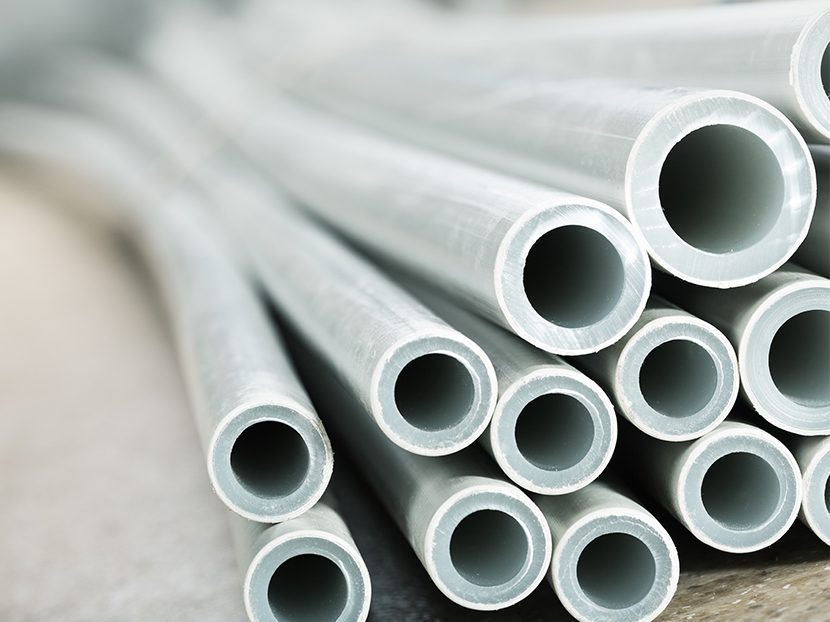Digital Exclusive: A Guide to the Coefficient of Linear Thermal Expansion

What happens when material is heated?
Under the effects of increasing temperature any material will expand. This can lead to significant changes in dimensions, to part warpage or to internal stress. The Coefficient of Linear Thermal Expansion (CLTE, often referred to as “α”) is a material property which characterizes the ability of a plastic to expand under the effect of temperature elevation. It tells you how much the developed part will remain dimensionally stable under temperature variations.
The linear coefficient ‘CLTE or α’ for plastic and polymer materials is calculated as:
α = ΔL / (L0 * ΔT)
Where:
- α is coefficient of linear thermal expansion per degree Celsius
- ΔL is change in length of test specimen due to heating or to cooling
- L0 is the original length of specimen at room temperature
- ΔT is temperature change, degrees Celsius, during test
Therefore, α is obtained by dividing the linear expansion per unit length by the change in temperature. When reporting the mean coefficient of thermal expansion, the temperature ranges must be specified.
Applications include:
The thermal expansion difference develops internal stresses and stress concentrations in the polymer, which allows premature failure to occur. Hence, CLTE is important for the economics of production as well as the quality and functioning of products.
- It is required for design purposes. Thermal expansion is often used to predict shrinkage in injection molded parts. Watch this video to avoid plastic quality crashes.
- It helps determine dimensional behavior of structures subject to temperature changes.
- It also determines thermal stresses that can occur, and cause failure of a solid artifact composed of different materials when it is subjected to a temperature excursion (specially to predict efficient material bonding or while using plastics with metals).
Additional CLTE Resources include:
- CTE, Linear Values of Several Plastics
- Main Techniques Used to Measure CTE, Linear
- Factors Affecting Thermal Expansion Coefficient Measurements
How Do You Measure Coefficient of Linear Thermal Expansion?
Most widely used standards to measure coefficient of linear thermal expansion in plastics (thermoplastics and thermosetting materials, filled or unfilled, in the form of sheet or molded parts) are ASTM D696, ASTM E831, ASTM E228 and ISO 11359.
The main techniques used for CTE measurements are:
(Of course, several other methods exist as well, but they are not discussed here.)
Dilatometry Technique
This is the widely used technique in which a specimen is heated in a furnace and displacement of the ends of the specimen are transmitted to a sensor by means of push rod. Push rods may be of the vitreous silica type, the high-purity alumina type, or the isotropic graphite type.
ASTM D696 - This test method covers determination of the coefficient of linear thermal expansion for plastic materials having coefficients of expansion greater than 1 µm/(m. degrees Celsius) by use of a vitreous silica dilatometer. The nature of most plastics and the construction of the dilatometer make −30 to 30 degrees Celsius (−22 degrees Fahrenheit to 86 degrees Fahrenheit) a convenient temperature range for linear thermal expansion measurements of plastics. This range covers the temperatures in which plastics are most commonly used.
ASTM E228 - This test method shall be used for temperatures other than −30 degrees Celsius to 30 degrees Celsius to determine linear thermal expansion of solid materials with a push-rod dilatometer.

(Source: Linseis)
Thermomechanical Analysis (TMA)
With thermomechanical analysis, measurements are made using a thermomechanical analyzer consisting of a specimen holder and a probe that transmits changes in length to a transducer that translates movements of the probe into an electrical signal.
ASTM E831 (and ISO 11359-2) – These methods are applicable applicable to solid materials that exhibit sufficient rigidity over the test temperature range. The lower limit for CTE with this method is 5 × 10-6/K (2.8 × 10-6/degrees Fahrenheit), but it may be used at lower or negative expansion levels with decreased accuracy and precision. It is applicable to the temperature range from −120 to 900 degrees Celsius. The temperature range may be extended depending upon the instrumentation and calibration materials used.
Interferometry
With optical interference techniques, displacement of the specimen ends is measured in terms of the number of wavelengths of monochromatic light. Precision is significantly greater than with dilatometry, but because the technique relies on the optical reflectance of the specimen surface, interferometry is not used much above 700 degrees Celsius (1290 degrees Fahrenheit).
ASTM E289 – This provides a standard method for linear thermal expansion of rigid solids with interferometry that is applicable from –150 to 700 degrees Celsius (–240 to 1290 degrees Fahrenheit). It is is more applicable to materials having low or negative CTE in the range of <5 × 10-6/K (2.8 × 10-6/degrees Fahrenheit), or where only limited lengths of thickness of other higher expansion coefficient materials are available.
This blog originally appeared on www.iomnexus.specialchem.com. Follow this link to continue reading.




